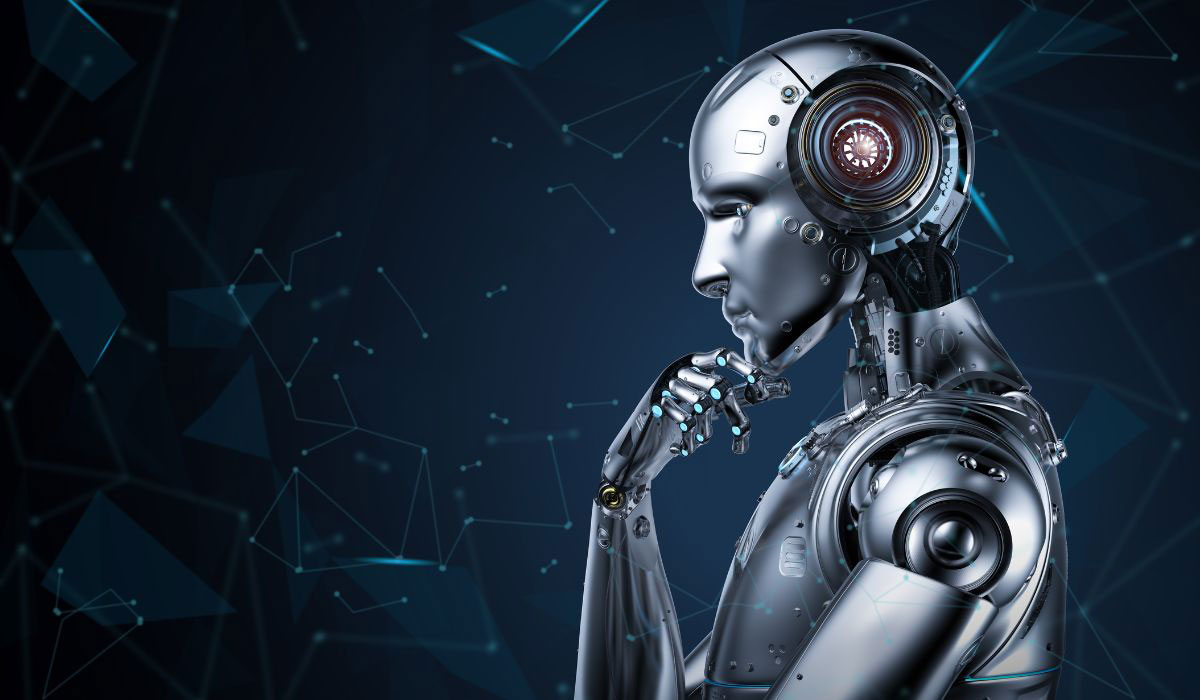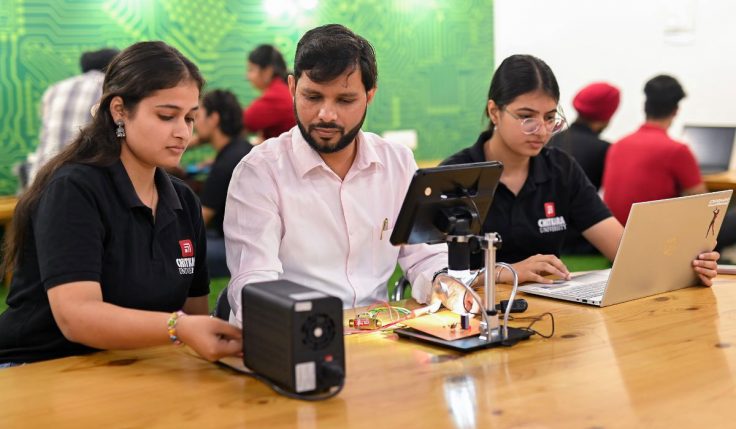In the past few years, the field of robotics has shown significant growth driven by innovations in Mechatronics Engineering. As an interdisciplinary field that combines mechanical engineering, electronics, computer science, and control engineering, Mechatronics has become the backbone of modern robotics. The synergy has led to the creation of advanced robotics systems that are more intelligent, efficient, and versatile than ever before. In this blog, we will look at the advancements in the field of robotics brought by Mechatronics Engineering. Please keep reading to find out more.
1. Integration of AI and Machine Learning: A significant advancement in robotics is the integration of Artificial Intelligence (AI) and Machine Learning (ML). Mechatronics engineers develop robots that can learn from their environment and experiences. Moreover, the robots perform complex tasks, adapt to new situations, and make decisions autonomously. For instance, AI-powered tools in manufacturing can optimize production processes by learning efficient ways to perform tasks, reducing downtime, and increasing productivity.
2. Improved Sensing and Perception: The modern robots are equipped with advanced sensors that enable them to understand their environment with a higher precision. The field of mechatronics engineering has encouraged the development of sensors that can effectively detect a wide range of phenomena including temperature, pressure, light, and sound. These sensors are integrated with an improved algorithm that can process data and also allow robots to interact with their surroundings effectively. For example, in autonomous vehicles, the LIDAR (Light Detection and Ranging) sensors create detailed 3D maps of the environment allowing the vehicles to navigate safely.
3. Precision and Dexterity: The precision and dexterity of a robotic system have been enhanced with advancements in the field of mechatronics. Robotic arms are used in many industries, including automotive and electronics, as they perform tasks with micron-level accuracy. The precision level is achieved with an integration of high-resolution encoders, an advanced control algorithm, and a feedback system. Ensuring this precision is important for applications such as semiconductor manufacturing, where minimal errors can lead to defects.
4. Human-Robot Collaboration: An important focus in modern robotics is the development of systems that can safely collaborate with humans. The collaborative robots are designed to work along with human workers, enhancing productivity and safety. The mechatronics engineers have developed advanced safety features, including force sensors and vision systems that enable robots to detect and respond to human presence. The robots are also used in sectors such as healthcare, where they assist in surgeries and rehabilitation, along with manufacturing, where they handle repetitive and physically demanding tasks.
5. Miniaturisation and Mobility: Mechatronics engineering has played an important role in the miniaturisation and mobility of robots. The micro-robots that are used in medical applications can navigate through the human body to perform minimally invasive surgeries and deliver targeted drug therapies. The tiny robots are effectively equipped with micro actuators and sensors so that the movements can be controlled with a higher precision. In addition, advancements in battery technology and energy efficiency components have also extended the operational time and range of mobile robots, which makes them more practical for applications like disaster response and environment monitoring.
6. Advanced Control Systems: The development of sophisticated control systems is another field where mechatronics has contributed to robotics. Modern control systems use advanced algorithms for managing the dynamic behaviour of robots in real time. The modern control systems ensure that robots perform complex tasks with better stability and accuracy. For example, drones that are equipped with advanced control systems can easily maintain stable flight even in difficult conditions and perform precise aerial manoeuvres for applications including surveillance and mapping.
7. Autonomous Navigation: The robotics autonomous navigation has been completely revolutionised by the field of mechatronics engineering. Robots can navigate complex environments without human intervention, all thanks to advancements in sensor fusion, obstacle avoidance algorithms, and path planning. Autonomous robots are used in many industries, including agriculture, where they perform tasks like planting, harvesting, and monitoring crop health. Swarm robotics inspired by the behaviour of social insects is another development that is being explored for applications like search and rescue missions and environmental monitoring. In swarm robotics, many robots work together to achieve a common goal demonstrating collective intelligence.
Why Pursue Mechatronics Engineering From Chitkara University?
Mechatronics engineering is a unique degree program offered at Chitkara University that offers a combination of mechanical, electrical, and computing technology with automated control and information systems, preparing you for a top career in the design, engineering, and manufacturing industries.
As a mechatronics engineer, you work in all aspects of the development of smart machines, from design and testing to manufacturing. This can be in industries such as medical, robotics, and assistive technology, including human-machine interaction, manufacturing, unmanned aerial and ground vehicles, and education.
Chitkara University has designed an industry-aligned curriculum wherein students learn mechatronics, autonomous system technology, and robotics, which also offers them many opportunities for practical applications and project work in the same field.
Program Content of Mechatronics Engineering
The main focus of the program includes the below-mentioned topics:
- Basics of Mechanical Engineering, Computer Science, Electronics Engineering, Engineering Systems and Control Engineering.
- Introduction to Robotics Artificial Intelligence and Machine Vision, Robot Operating System, Mobile Robotics.
- Industrial Automation for Industry 4.0 employing the study of Fluid Power Technology – Hydraulics and Pneumatics, Electric Drive systems, PLC – and its technology developments.
- Study of Computer Programming Languages, Data Sciences, Deep Learning, Industrial IOT.
- Study Properties and Applications of Material Sciences, Manufacturing Technology, Thermal systems.
- Analog/Digital Electronics and Communications, Signal Processing, Embedded Systems.
From the creation of robots to engineering antilock brakes, students can effectively learn to create smart machines and new solutions with an engineering degree in the field of mechatronics from Chitkara University.
Program Highlights of 4-Year B.E. in Mechatronics Engineering
- Multidisciplinary: When you complete a mechatronics engineering degree from Chitkara University, you are in a position to combine a wide range of skills in mechanical engineering, computer science, control systems, and electrical engineering. The degree allows you to gain multidisciplinary skills and knowledge that can give you a solid base required to solve complex engineering problems. The program also gives you a big-picture perspective, adaptability, and flexibility, as they are all key components of career success.
- Hands-on Labs: The field of mechatronics is hands-on, so it makes sense that the degree program can be hands-on. At Chitkara University, all the mechatronics students put theory into practice in state-of-the-art labs. You will work with similar components, technology, and systems that present-day world professionals are working within the field. What this means is that you will graduate with the confidence and experience that you need, which requires less on-the-job training than many of your fellow students.
- Useful Skills: In the Mechatronics degree, students will not only learn the theory of why things work, but you will also learn how to build the systems yourself. The mechatronics students learn how to build, repair, and maintain the smart machines and controls, which are the skills that employers look for.
The growth in the field of robotics driven by mechatronics engineering is changing industries and improving the quality of life. The integration of AI enhances sensing and perception, achieving high precision, enabling human-robot collaboration, miniature robots, developing advanced control systems, pioneering autonomous navigation, and mechatronics engineers are now pushing the boundaries of what the robots can achieve.
Also, read this blog post: Future Prospects of Mechatronics Engineering
As the field continues to grow, we expect innovative and impactful robotic systems that can shape the future of technology and society. If you want to succeed as a mechatronics engineer, then pursue a 4-year B.E. in Mechatronics Engineering from Chitkara University to build your career.






